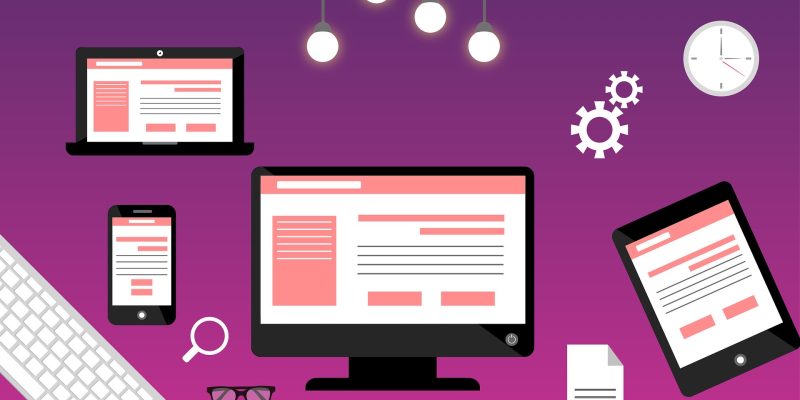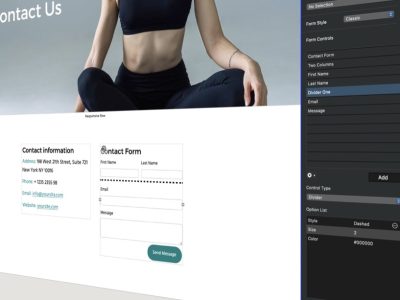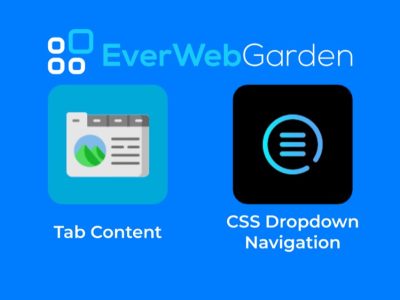So you’ve just purchased EverWeb and have downloaded the app! Now’s the time to start your first website, so you launch EverWeb and click on the ‘Start new website’ button. You now get to select the template upon which to base your website This is an important juncture, though, as it’s the place where you’ll be choosing the ‘type’ of website you’re going to be designing. So, let’s pause at this point to look at the choices that are open to you…
All About Page Layout Types
EverWeb includes two types of page layout:
- Fixed Width Page Layouts and
- The Responsive Page Layout
The Fixed Width Page Layout category has two layouts types:
- The Centered Layout and
- the Left Aligned Layout
This is all well and good, but what are these Page Layout Types all about and which one should you be using?
Fixed Width Page Layouts
To find the right page layout for your website, it’s worth explaining what the different page layout types are so you can make the choice that best suits your needs. Fixed Width Page Layouts, by definition, are ones where you can set the width of the page as you want. In EverWeb, the width is denoted in pixels and is set using the ‘Content Width’ setting in the Page Settings tab of the Inspector Window. EverWeb includes two Fixed Width Page Layout types, Left Aligned and Centered. The default is the Centered Layout as the Left Aligned layout is something very specific that is rarely, if ever, used. The Centered Layout is, therefore, the one to use if you want a fixed width page.
The responsive page layout came out of a need by website designers. When personal computers first came in to being, screen displays were generally of a ‘standard’ size which made website design easier as you only had one page size to think about. As technology evolved, different screen display sizes came in to being, but generally the one page width design fits all paradigm continued. Typically pages were about 980-1000 pixels wide.
Things started to change with the advent of mobile phones, as it became necessary to develop pages with a width of about 480 to accommodate smaller screen widths. So website developers now had to develop a page for those using a desktop device and an equivalent page for those using a mobile device. You can easily do this type of design in EverWeb, linking the two page designs together so that when published, your site visitor will always land on the right width page for the device they are using.
Over the years, the diversity of screen widths increased so much that this inevitably led to website developers asking: Is there was a way whereby only one page design could be developed that will fit every device instead of having to always develop desktop and mobile pages?
The answer to this question came when the coding language behind websites, HTML, came of age allowing for the brith of Responsive Website Design.
The Responsive Page Layout
The goal of responsive website design was that of a one page design that could automatically reshape itself correctly to suit any device upon which it was displayed upon. So responsive pages don’t need to use pixels to define the page width as the page always takes up 100% of the width of the device it’s being displayed upon. So no more desktop-mobile design paradigm. This sounds great but why don’t we all just use responsive pages and forget about fixed width page design altogether? Well, there are a couple of important things to bear in mind. The first is that responsive page design is conceptually more difficult to learn than fixed width page design and secondly, some designers find responsive web design restrictive. Responsive design page content has to conform to a ‘structure’ in order for it to work properly. Fixed width page design, on the other hand, is more free-form and so it can be quicker to design two fixed width pages than to design just one responsive page. The last thing to note here is that correcting design issues and problems is potentially more difficult and time consuming for responsive pages than for fixed width page designs.
Your First Decision, A Choice!
So, you have a choice at the very start of your website building journey! Here’s our advice…
- Read the chapter in the EverWeb User Manual on Responsive Web Design which gives you details about the pro’s and con’s of both fixed width and responsive website design.
- If you are totally new to EverWeb and/or building websites, you’re be better off starting with the fixed width Centered Layout. It’s easier and quicker to get your site up and running using this approach. You also get to learn about EverWeb at the same time which is useful as the same features are used to create a responsive sites. Useful if you decide to try to create a responsive site later on.
- If you’re an experienced website builder and/or have used EverWeb already, yes, go ahead and create a responsive website.
- There’s no right or wrong choice here, both design styles have their merits and drawbacks. Use the page style that suits the needs of your site, your own abilities and the time and effort you have available to invest in your design.
- Don’t forget as well, that you can always redesign your site using a different page layout style at a later date so there’s no need to feel any pressure about choosing one page style over the other.
Putting Your Choice Into Action!
So let’s go back the point where we started the discussion. You’ve clicked on the ‘Create a new website’ button and have EverWeb’s Theme Template Chooser in front of you. In the top left hand corner you will see a dropdown menu which shows you ‘All’ the Theme Templates. click on the dropdown. You can now choose to see only Fixed Width (i.e. Centered) or Responsive themes. Select which you prefer, then choose the theme template you want. Now, your design journey can begin!
If you have a question or comment about page layout types, or anything EverWeb, please let us know in the Comments Section below!










Comments